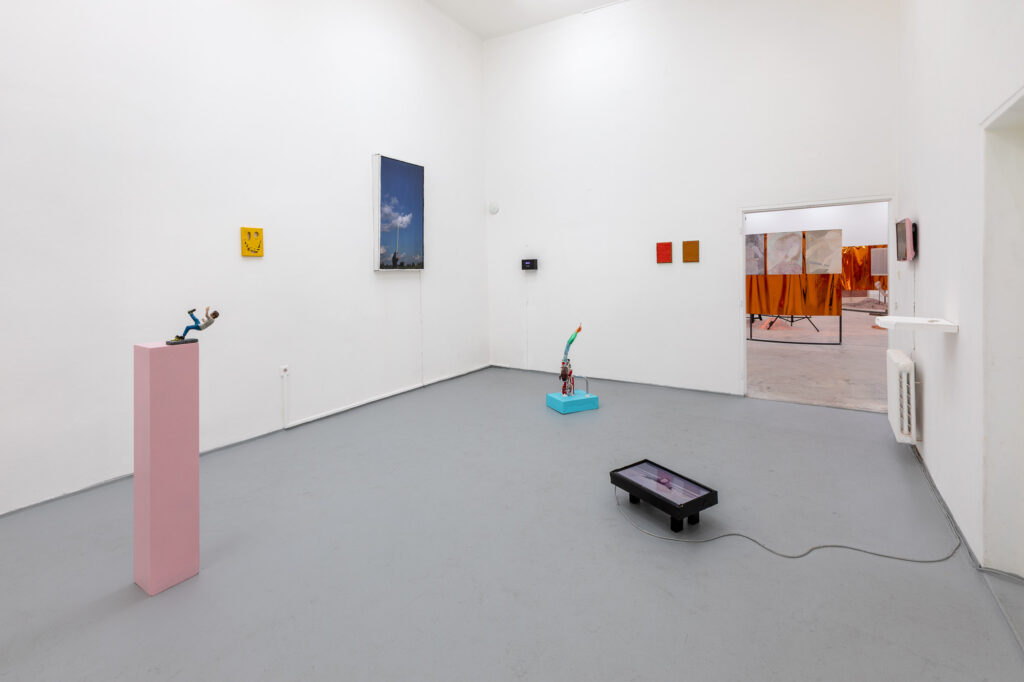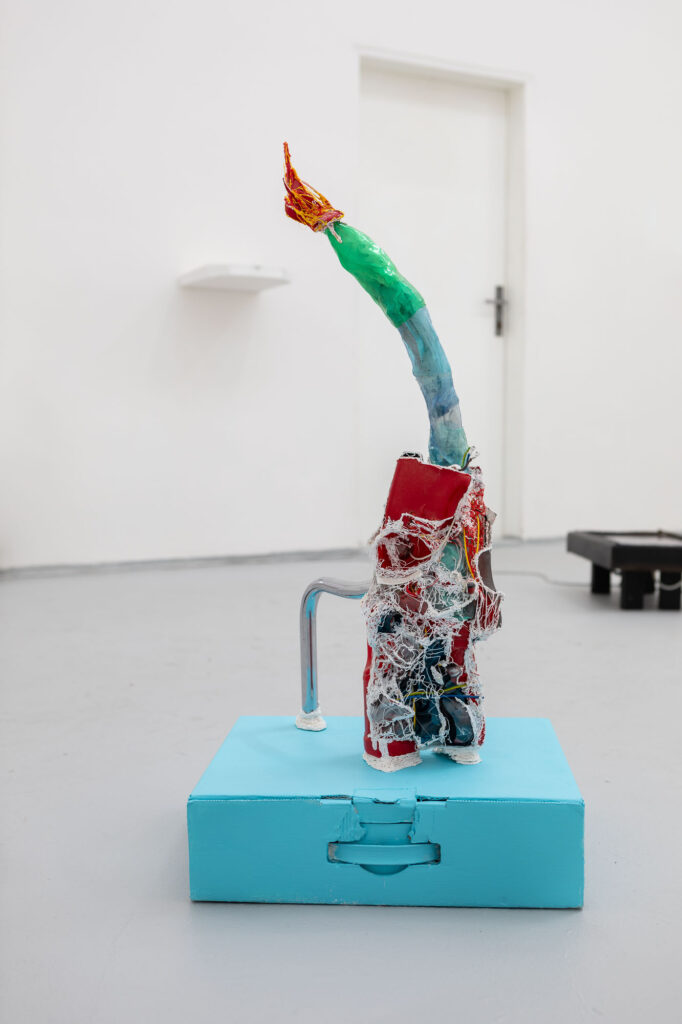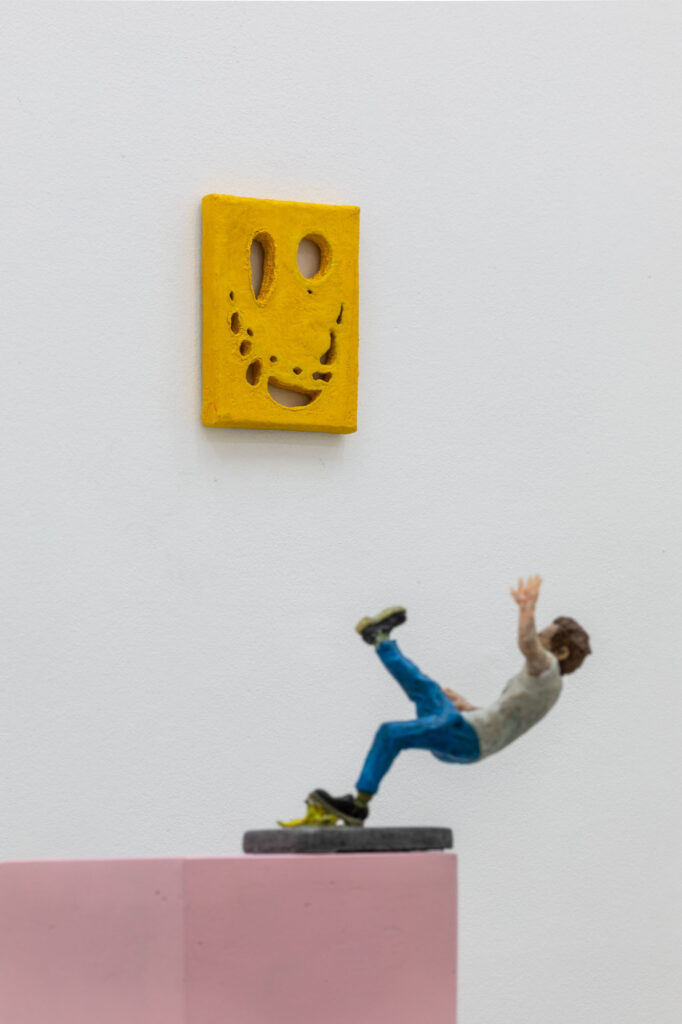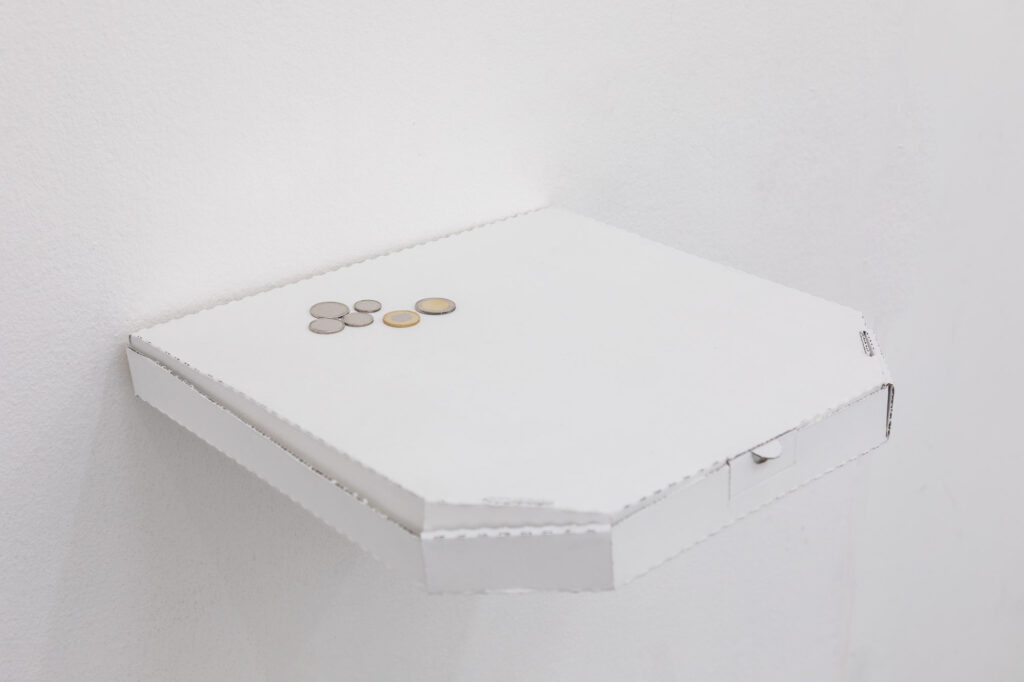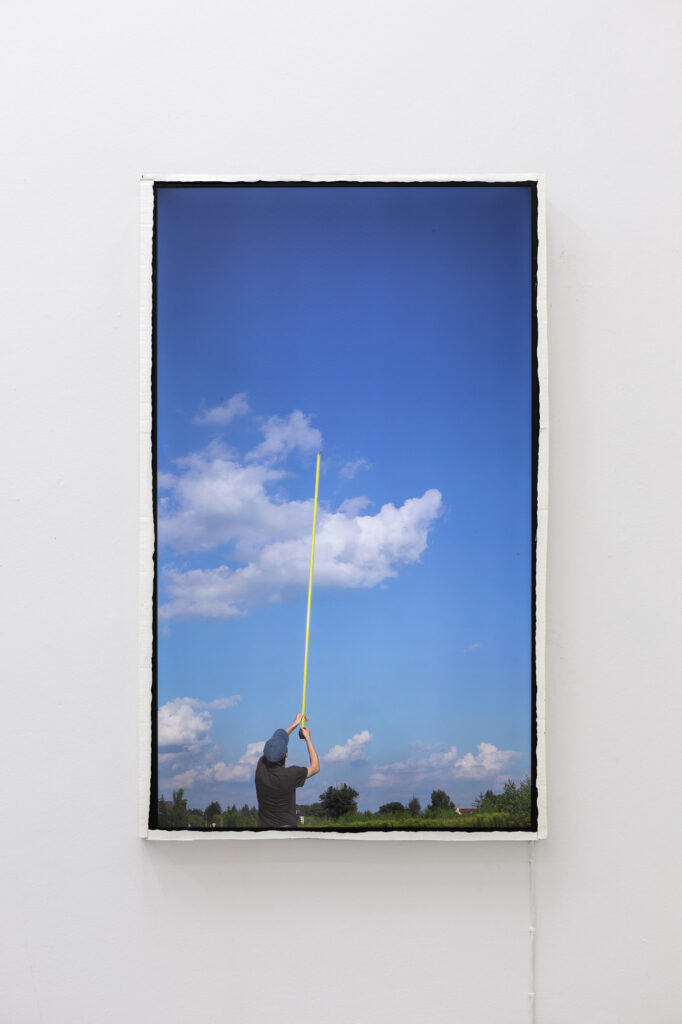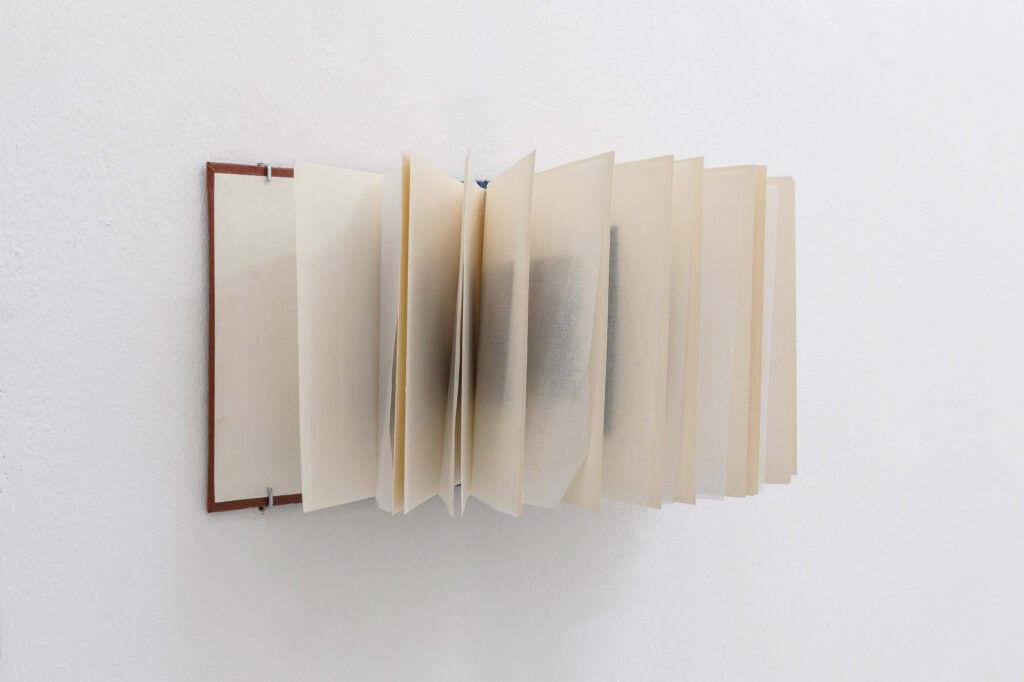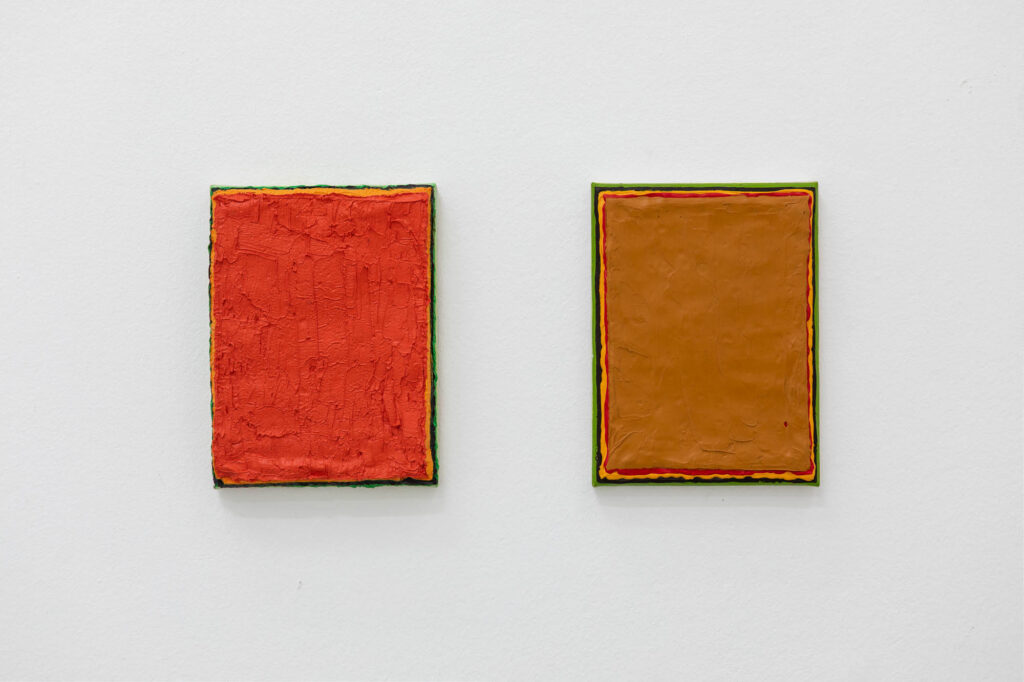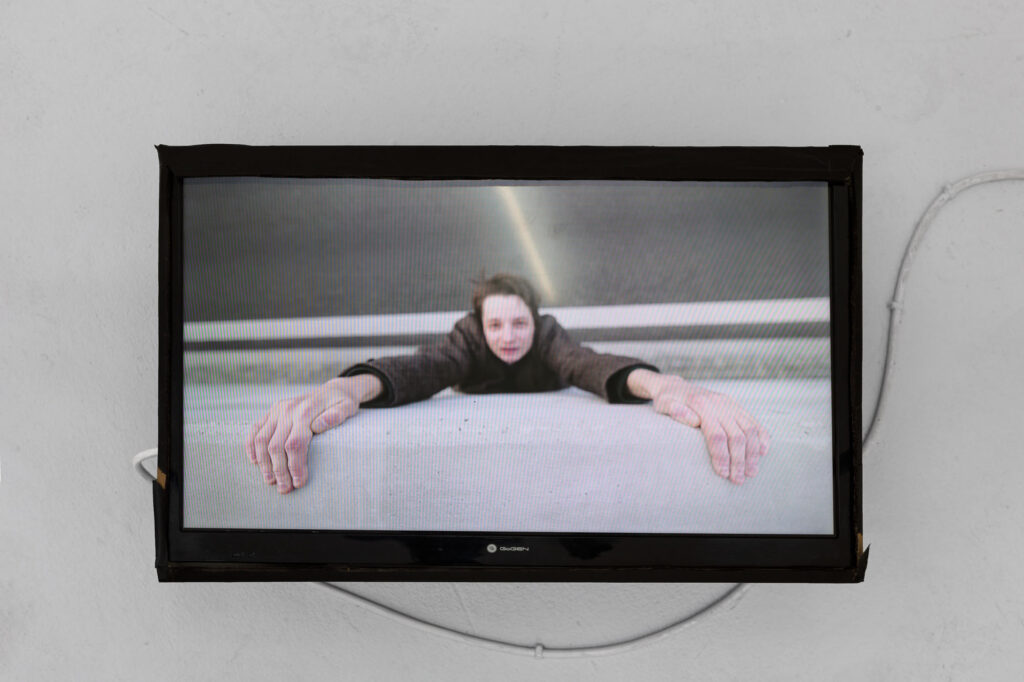
Karlin Studios – Grzegorz Demczuk – Slapstick
As they say, there are lessons to be found in failure. The need to intellectually process and define everything that contemporary art often exerts can become a consuming errand – failing then poses as a therapeutic device. Likewise, in this show, failure acts as a process of coming to terms with the entropy of life using the most obvious solution – humour. Walking through this small room, I can’t help but think of a rollercoaster ride. The distances among the works have become almost equilateral, and they now serve as pinpoints of various interests on a map. What started as a wish for a formal exhibition transformed into something ‘fun’, almost too fun for an exhibition in an art world that mostly chooses to take itself more seriously than it actually should. The somehow retrospective exhibition of a young man nonetheless instead stays humble, transparent, and its informality can’t help but feel somehow formalised. Its works try really hard to state the obvious, taking turns confirming the truisms in our tragicomical lives, and pointing to the banal.
Standing on a pink pedestal, the small man in Slapstick slips on a banana, performing the quintessential gag. What has now become a moment that purely exists in retro comedic imagination, somewhere in the realm of Chaplin campiness and drawn comics, apparently has a historical basis – as Demczuk explains to me, at the same time you would have started having large loads of bananas imported, the garbage collecting system hasn’t yet properly been developed, so there indeed would be a time when slipping on a banana on the street wouldn’t be as ludicrously uncommon. The grey base of the work has a broken phone inside, on which we slip our finger just like we would slip our body on a banana peel. See? It’s simple.
The pinks are now in conversation, and a teethy mouthful of Fresh after Chewing stares at us, or maybe smiles, apparently hiding a previous layer of paint in a relief of chewing gum. The sheer quantity of chewed material, with its fleshy and white hues, proves abject when up close because it not only carries the artificial sweet smell of gum, but also the mouth that chewed it. And loads of saliva. There still is a technique to be found, as one can reach different textures with this material – longer mastication produces a smoother finish.
You may realise many objects here relate to food, which perhaps alludes to a visceral conviction that arrived all of a sudden in the artist’s childhood – he wouldn’t touch the dark part of his Hamburger and Hamburger 2, i.e. meat, in real life. The tasty subjects of the paintings are fairly understandable, especially now that Burger King changed its visual communication to something similar. The thicker one, painted using oil, is so thick it is still gooey liquid inside, likely reminiscent of the caramel section of a Mars bar (feel free to gently touch it but please do not taste). These are burgers in their own axonometry or their own panoramic perspective. The title of Say Cheese says it all, again we encounter a banal explanation, plus the work is very much ready to be taken pictures of. The Polished złotys on the pizza box (let’s see if they are still there at the end of the exhibition) are a failure of a coin toss, a bet left unsolved given that the difference on their sides has been decidedly erased.
To a large extent, we could call Demczuk a performance artist. Generally, his video acts depict simple gestures, short fragments scrutinising one simple idea. If the artist doesn’t necessarily attempt to reach mastery, exhaustion, and commitment to the oeuvre are important elements nonetheless. It apparently took two years of practice with the javelin to reach the skill to shoot the two-channel Javelin Throw we encounter here. Using multiple screens, the artist himself may decide how well he throws. On the other hand, Sky is the Limit proves there is a natural limit to things, and it comes much earlier to us than the sky. Cliffhanger visits us from the world of cinema (just like Slapstick), and given the fact that the 28-second long video performance featuring the artist hanging on a ledge has now become a cute animal/table on legs, I can’t help thinking the stakes have been raised and I bear a hint of responsibility for the performance artist’s safety.
Bodies are present as well in the 3D printer pen-made Untitled which morphed into a lightbox or a vitrage in the process of our dialogue. It presents a flattened and bulldozed version of the archetypes of beverage bottles branding, including its barcode and nutrition label. Bodies are missing, on the other hand, in the Zdjęcia photo album. Here, the family pictures indeed exist more as free material to peruse, rather than a locus of tragic melodrama. Through their clothes, the absent people are rendered objects, and also shed light on a certain private European post-communist moment frozen in time. All the while, the Attention Meter pragmatically measures our collective bodily presence in front of it, sending ultrasound waves and returning back after having met our surface. Let’s see how many seconds, minutes, or hours it collects.
Lukas Hofmann
Grzegorz Demczuk, Slapstick, Curator: Lukas Hofmann, Karlin Studios, 24.11. 2021 – 16. 1. 2022

